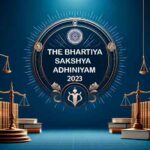REPORTABLE
IN THE SUPREME COURT OF INDIA
CRIMINAL APPELLATE JURISDICTION
CRIMINAL APPEAL NO. 185 of 2016
(@ SLP(Crl.) No.967 of 2015)
State of Madhya Pradesh … Appellant
versus
Goloo Raikwar and Anr. … Respondent(s)
J U D G M E N T
C. NAGAPPAN, J.
Leave granted.
This appeal is preferred against the judgment dated 26.9.2012 passed by the High Court of Madhya Pradesh Principal seat at Jabalpur in Criminal Appeal No. 1797 of 2004 whereby the High Court partly allowed the appeal filed by the respondents/accused, by setting aside their conviction under Section 302 IPC and convicted them for the offence under Section 304 Part I IPC and thereby reducing their sentence from life imprisonment to Rigorous Imprisonment for 10 years.
Briefly the facts are as follows : Deceased Hari Choudhary is the uncle of PW1 Kallu Choudhary. On 15.8.2000 at about 3.30 p.m. both of them were going to eat betel and on their way they saw respondent no.1/accused Golu, respondent no.2/accused Bhura and three other accused namely Puttu @ Ram Charan, Gabbar and Bedilal armed with weapons, coming and accused Bhura hurled country bomb at them. On explosion they fell down and accused Bhura dealt a blow of sword to PW1 Kallu and the other accused also assaulted him with their weapons. PW1 saw the accused persons assaulting Hari Choudhary with their weapons. He ran and informed PW3 Ram Niwas, brother of Hari and they carried injured Hari to Victoria Hospital, Jabalpur where he was declared dead. On telephonic information PW10 Sub- Inspector R.B. Soni reached the hospital and recorded Exh.P1 complaint given by PW1 Kallu and prepared Exh.P2 Murg Report. He conducted inquest and prepared Exh.P3 Inquest Report and gave requisition for conducting post- mortem. He also sent injured PW1 Kallu for medical examination.
Dr. Ashok Kumar Jain conducted the autopsy and found following injuries on the body of Hari:
Incised wound 3” x ½” muscle deep on right cheek Incised wound 4” x ½” x bone deep on left cheek extending up to ear. The pinna of the ear was cut.
Incised wound on right knee joint posteriorly to lateral aspect. Joint disarticulated. Patella hanging with the help of tendon. Vessels, nerves and other soft tissues severed.
Incised wound 3” x ¾” x bone deep over occipital region obliquely placed. Clotted blood matting the skull hair.
Swelling of blue colour on the right shoulder on the back side 6” in length.
Linear abrasion over left side of chest lateral aspect 4” in length, bluish in colour.
Injuries No.1,2,3 and 4 were caused by hard and sharp object. Injuries No.5 and 6 might have been caused by hard and blunt object. All the injuries were ante mortem in nature and were sufficient to cause death. In the opinion of Dr. Jain, cause of death was excessive haemorrhage from Injury No.3. The death of deceased was homicidal.
PW10 Sub-Inspector Soni, after registering a case under Section 302 IPC and Section 3(2)(v) of Scheduled Caste/Scheduled Tribe (Prevention of Atrocities) Act against the accused persons and after investigation filed the charge-sheet. After committal the Sessions Court framed charges against both the respondents herein and accused Puttu @ Ram Charan. Accused Gabbar and Bedilal were absconding. The trial court convicted the respondents herein for the offence under Section 302 IPC and acquitted them for the offence under Section 3(2)(v) of the SC/ST (P.A.) Act and sentenced each of them to life imprisonment and to pay a fine of Rs.1000/- each in default to undergo one month simple imprisonment for the charge of murder. At the same time the trial court acquitted accused Puttu @ Ram Charan of the charges. Challenging the same, both the respondents herein preferred appeal and the High Court altered the conviction and sentence as mentioned above. Aggrieved by the same the State has preferred the present appeal.
The learned counsel for the appellant State submitted that the view taken by the High Court is patently erroneous in law as the offence under Section 302 IPC was clearly made out. It is his further submission that the High Court has committed an error in holding that injury no.3 was not on vital part of the body and the other injuries were not fatal in nature, and therefore, intention to commit murder of the deceased cannot be held established. According to him the accused attacked the deceased by hard and sharp weapons at the time of occurrence resulting in his death and the offence of murder is clearly made out. Per contra the learned counsel appearing for the respondents supported the view taken by the High Court and submitted that the impugned judgment is sustainable in law.
The respondents have not challenged their conviction. The trial court, as already noticed, had convicted the respondents of the offence of murder. The High Court has disagreed with the Trial Court and held the offence was not ‘murder’ but one under Section 304-I of the Indian Penal Code. The High Court reached this conclusion on the following reasoning:
“17. On perusal of the evidence of Dr. Ashok Kumar Jain (PW-6) it seems that injuries No.1 and 2, which were caused on right and left cheeks of deceased by sharp edged weapons, were not grievous. Similarly, injury No.4, which was an incised wound on the occipital region of the skull was bone deep. Though there was bleeding from it, but the bone was not found cut. Injuries No.5 and 6 were respectively swelling and abrasions on shoulder and chest. No. underneath organ was found damaged. No doubt Dr. Jain stated that injuries found on the body of deceased were sufficient to cause his death, but he did not mention this fact in the postmortem report (Ex.P/10). In Ex.P/10 as well as in court he specifically stated that the cause of death of deceased was excessive haemorrhage from the injury No.3 which was on the knee.
18. In view of the above medical evidence, in our opinion, it cannot be held established with certainty that appellants intended to commit murder of the deceased, but, since they caused number of injuries by sharp edged weapons to deceased and the injury No.3 proved fatal, it can be held that appellants assaulted deceased with an intention of causing such bodily injuries to him as were likely to cause his death making them liable to be punished under Section 304-I of the Indian Penal Code”.
8. We are unable to appreciate and accept this reasoning. When the deceased along with PW1 Kallu Choudhary were going to eat betals respondents/accused came from the front side and second respondent Bhura pelted country bomb at them and inflicted blow of sword on Hari and the other accused assaulted Hari with sword, Gupti and Kankur and they also attacked PW1 Kallu Choudhary with weapons. Hari was soiled in blood and was moaning and on being taken to hospital, was declared dead. Injuries no.1 to 4 found on the body of Hari were incised wounds and 3rd and 4th of them were inflicted on the right knee joint and head respectively. Dr. Ashok Kumar Jain who conducted the autopsy has stated that the injuries found on the body were sufficient to cause death. It was pointed out that the cause of death was excessive haemorrhage from injury no.3 which was on the knee.
9. In State of Andhra Pradesh vs. Rayavarapu Punnayya and Anr. (1976) 4 SCC 382), this Court had to deal with a similar situation. In that case, the accused 5 in number beat the victim with sticks on the legs and arms of the deceased and when hospitalized the deceased succumbed to his injuries. The medical officer who conducted the autopsy opined that the cause of death was shock and haemorrhage resulting from multiple injuries and said injuries were cumulatively sufficient to cause death in the ordinary course of nature. Question arose whether in such a case when no significant injury had been inflicted on a vital part of the body, and the weapons used were sticks and the accused could not be said to have the intention of causing death, the offence would be ‘murder’ or merely ‘culpable homicide not amounting to murder’. This Court answered the question in these terms:
“39. ……. . All these acts of the accused were preplanned and intentional, which, considered objectively in the light of the medical evidence, were sufficient in the ordinary course of nature to cause death. The mere fact that the beating was designedly confined by the assailants to the legs and arms, or that none of the multiple injuries inflicted was individually sufficient in the ordinary course of nature to cause death, will not exclude the application of clause thirdly of Section 300. The expression “bodily injury” in clause thirdly includes also its plural, so that the clause would cover a case where all the injuries intentionally caused by the accused are cumulatively sufficient to cause the death in the ordinary course of nature, even if none of those injuries individually measures upto such sufficiency. The sufficiency spoken of in this clause, as already noticed, is the high probability of death in the ordinary course of nature, and if such sufficiency exists and death is caused and the injury causing it is intentional, the case would fall under clause thirdly of Section 300. All the conditions which are a prerequisite for the applicability of this clause have been established and the offence committed by the accused, in the instant case was ‘murder’.”
10. In the present case, the fact that the accused hurled country made bombs, has been established. The incised injuries caused to Hari were intentional and were sufficient to cause death in the ordinary course of nature even if it cannot be said that his death was intended. This is sufficient to bring the case within thirdly of Section 300.
11. For the foregoing reasons, we are of the opinion that the High Court was in error in altering the conviction of the respondents/accused from one under Section 302 to that under Section 304-I Indian Penal Code. Accordingly, we allow this appeal and set aside the impugned judgment and restore the judgment of the trial court convicting the respondents/accused for the offence of murder, with a sentence of imprisonment for life. The respondents/accused are directed to surrender before the trial court to serve out the remaining sentence, failing which the trial court would forthwith issue warrants of arrest and send them to jail.
…….………………………….J.(Jagdish Singh Khehar)
……..…..……………………J.(C.Nagappan) New Delhi;
March 02, 2016






